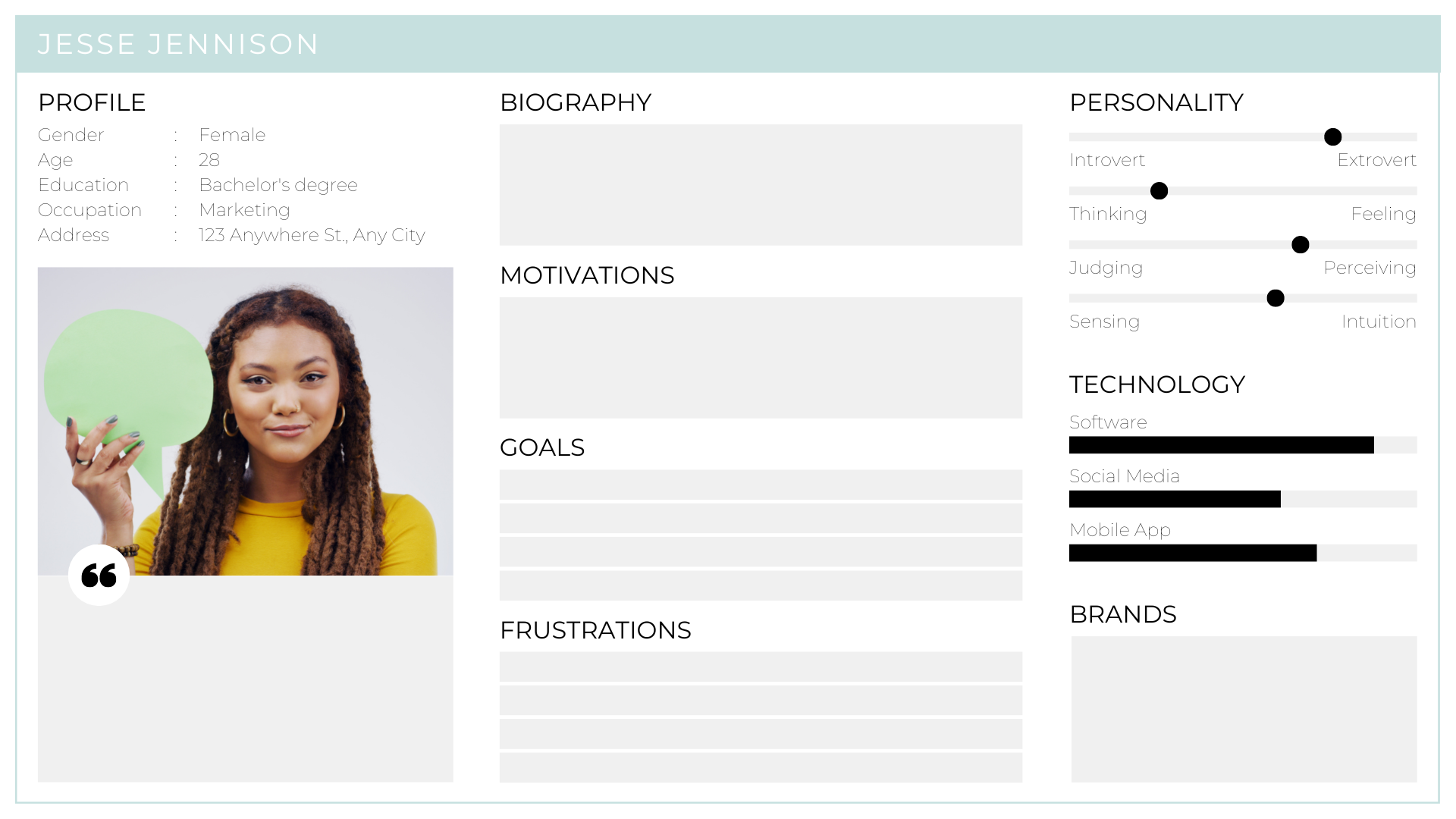How to Create Buyer Personas
Buyer personas are vital to marketing whether you are planning your marketing strategy, brainstorming new web content, or redesigning your website or brand. Experienced marketers create target audience segments called buyer personas to help customize marketing efforts toward their customer base.
Buyer personas are meant to represent your ideal customers based on demographic data, online behaviors and platforms, and your educated speculation about personal histories, motivations, and concerns.
To help guide you in creating your buyer personas, here’s a step-by-step process for creating buyer personas.
Brainstorm Your Buyer Personas
Your buyer personas should consist of end-users customers, influencers, and those with purchasing authority. Here’s some questions to help you figure out your buyer personas:
With whom do you first engage?
Who influences that person?
Who makes the final decision?
Are your personas different across industries, product lines, service types, or company size?
What age group / demographics typically buy your product?
How is your best and favorite customer?
Build a list based on these questions of your ideal buyer persona.
2. Prioritize Personas
The next step is to identify personas who have common needs or roles and consider merging them into one persona. Also take time to prioritize your persona list by considering their impact on the final purchasing decision, their relationship to your company, and the size of the audience persona group. You don’t need a persona for every person. Consider that you also may have negative buyer personas that stand in the way of customers purchasing with you.
If a key influencer group has only a few members, you may decide it’s best for sales to own those relationships and not have marketing prioritize them as a larger group. You want to narrow down your list to three to five primary personas. I recommend just having 3 personas if you are a small organization. Having too many personas becomes too complex to segment, especially when you’re just starting out.
3. Create Your Buyer Personas
Now it’s time to dig deep into your buyer personas. Do your research here. Start by creating three personas and then build from this number to further refine them and generate new ones as needed.
You’ll need to identify the following types of information for each persona:
Demographics
Gender
Age
Location
Education/Degree
Job Details
Company size
Industry
Career Path
Job Responsibilities
Decision Maker?
Who are they?
Gender
Age
Location
Education
Degree
What is their interests?
Hobbies
What activities are they involved in?
What sports do they watch?
What brands are they loyal to?
What an average day in their life like?
Morning Routine?
Afternoon Routine?
Evening Routine?
Who do they work with?
How they prefer to communicate?
What decisions do they make?
How do they spend their time?
What gets in the way of them doing their job?
Pain points
Things that make it harder to do their job
Solutions that would make their job easier
Friction points?
What make their job take longer?
What things could help speed them up?
What are their goals? What are they looking for?
Explain what they value most in making a purchase decision (price, support, etc.)
What they are trying to accomplish in their application.
What would make them the hero?
What platforms do they go to for information?
Identify the primary sources they use to gather information in their research and purchase decision processes.
Social Media Platforms they use?
Do they prefer calling, texting, emailing or DMs?
What sources do they trust?
What type of contet do they prefer?
Consider the style of content they are seeking: content that inspires versus concise guidance versus a very thorough process including all of the research, specs, and small print.
What content do they want?
Case Studies
White papers or ebooks
Videos
Social Media Platforms (Facebook, Instagram, TikTok, LinkedIn, etc)
Research studies
Free access / Free Subscription
What’s important to them when buying from a brand?
Quality?
Price?
Experience?
Brand Power?
Value Proposition they want?
What are their most common reasons they don’t do business with you?
List the reasons you hear most often for why your solutions will not meet their needs.
It might help to use a buyer persona template to capture all these demographics and better visualize your buyer personas.
4. Map and Develop Content for Each Persona
Buyer personas serve many purposes for your company. As a technical marketer, you should keep your buyer personas in mind as your plan and implement your marketing plan. Every piece of content you create should be written with a buyer persona in mind. Now that you have developed your buyer personas, brainstorm content that will lead your persona through each stage of the buyer's journey.
After brainstorming your buyer personas, you should develop a buyer persona template or document to capture all your data and share with your entire team.
5. Evaluate Personas Once a Year
Just as your company grows and offers new products and services, your personas should grow and develop. Once a year, be sure to review your personas. As you spend more time with clients, you'll notice new things about them and what types of content help influence their buyer's journey. Discuss this with your sales and marketing teams and update personas to reflect new discoveries.
Using informed data, outside research when needed, and your collective experience to create your personas, and then ensuring leaders in your organization agree and understand them, can result in significant efficiency gains and employee confidence. When your buyer personas start to become part of your regular language and reference to "Engineer Ethan" lead to heads nodding in agreement and understanding, you will experience the true power of personas.


